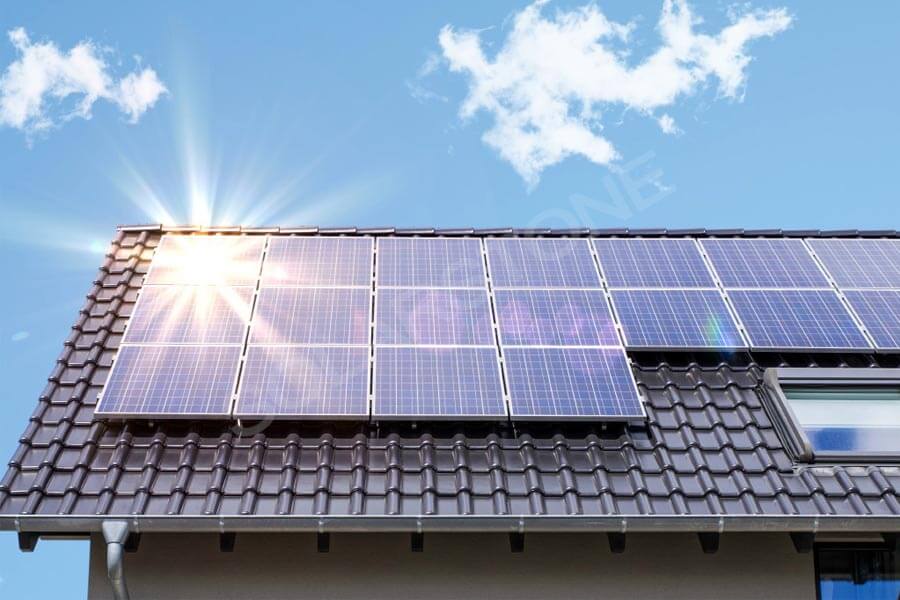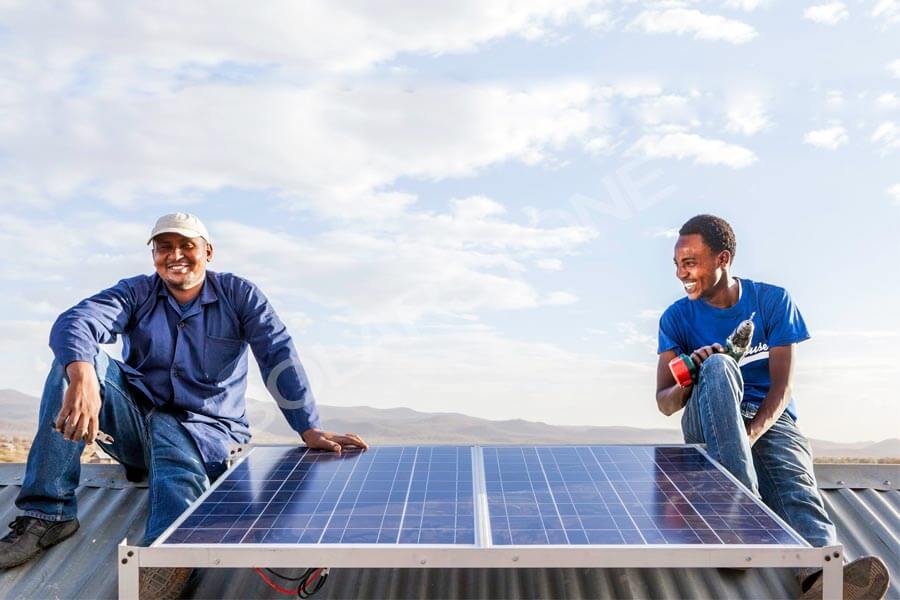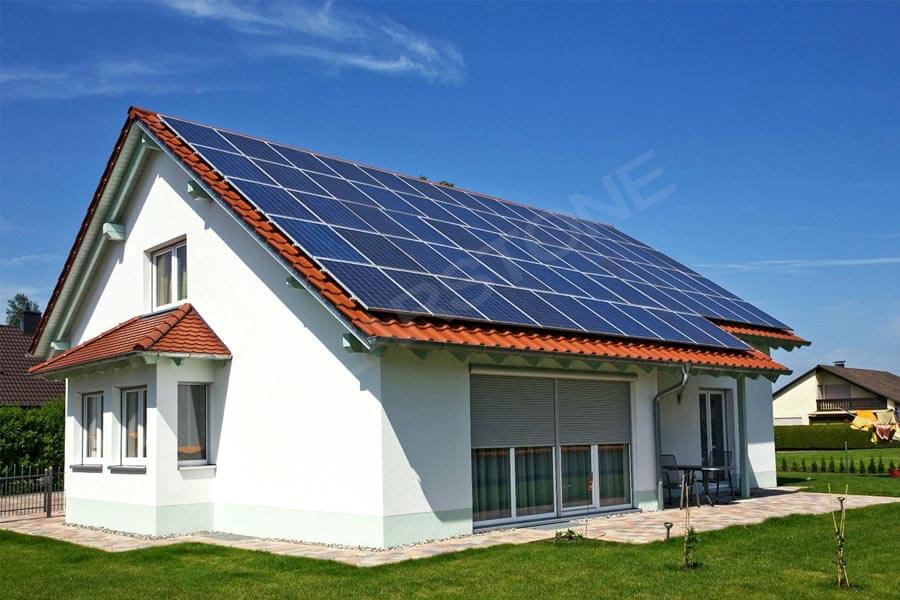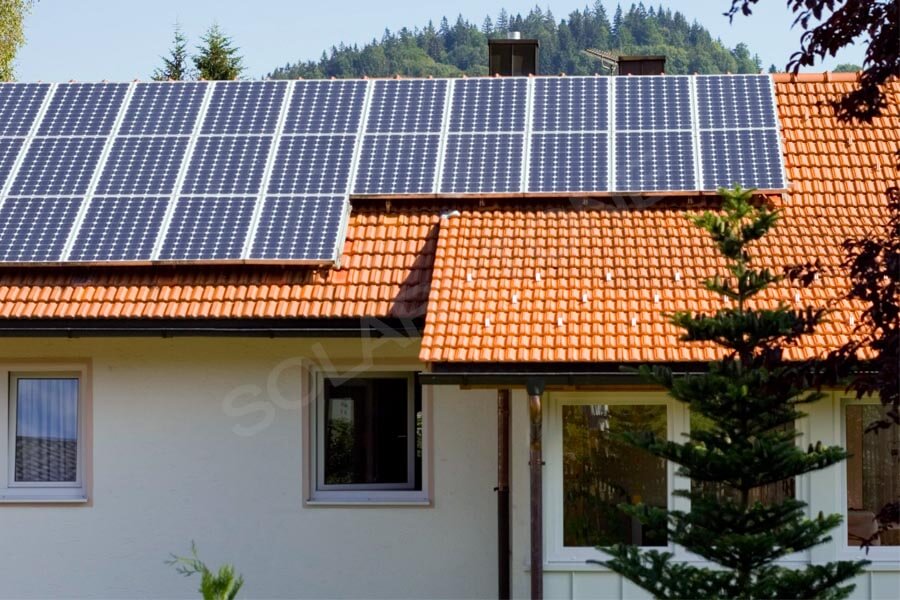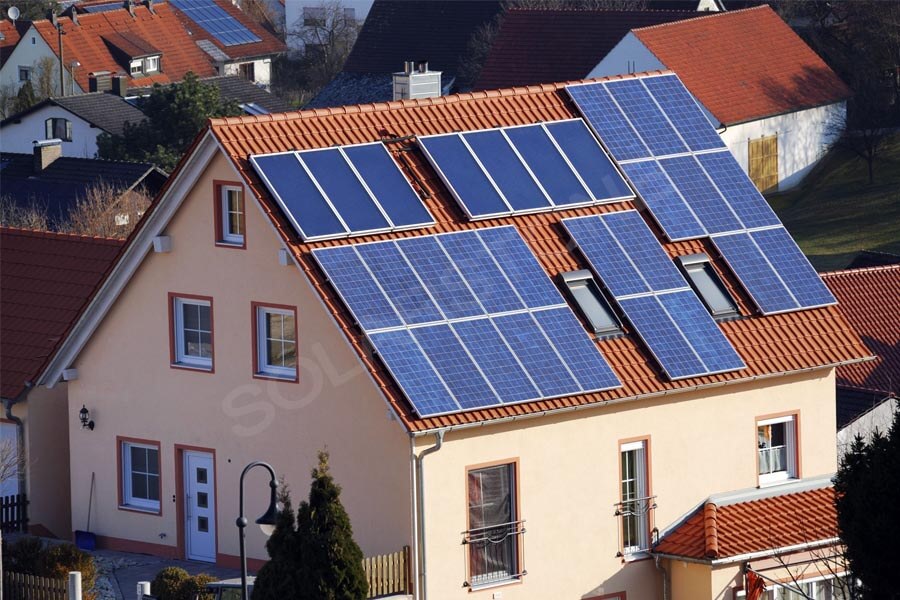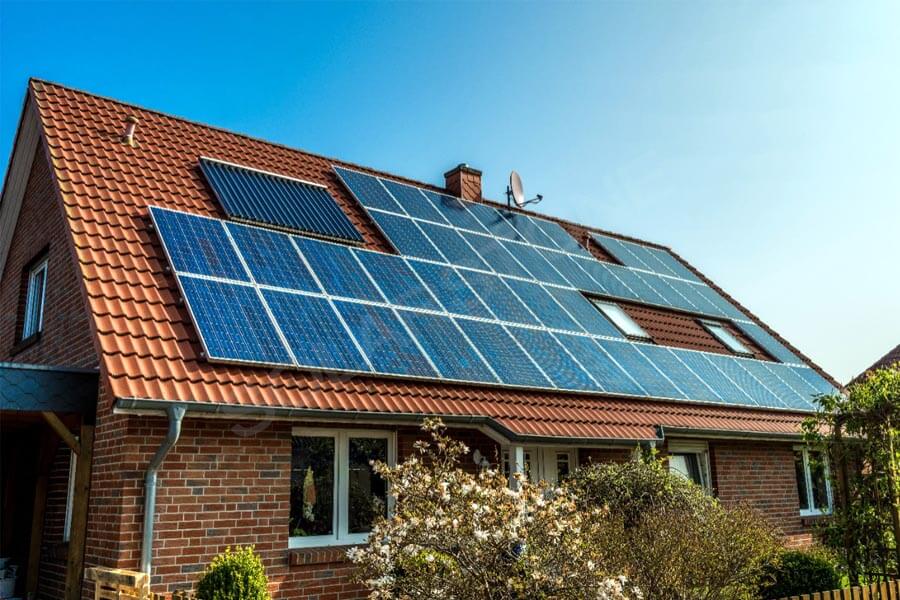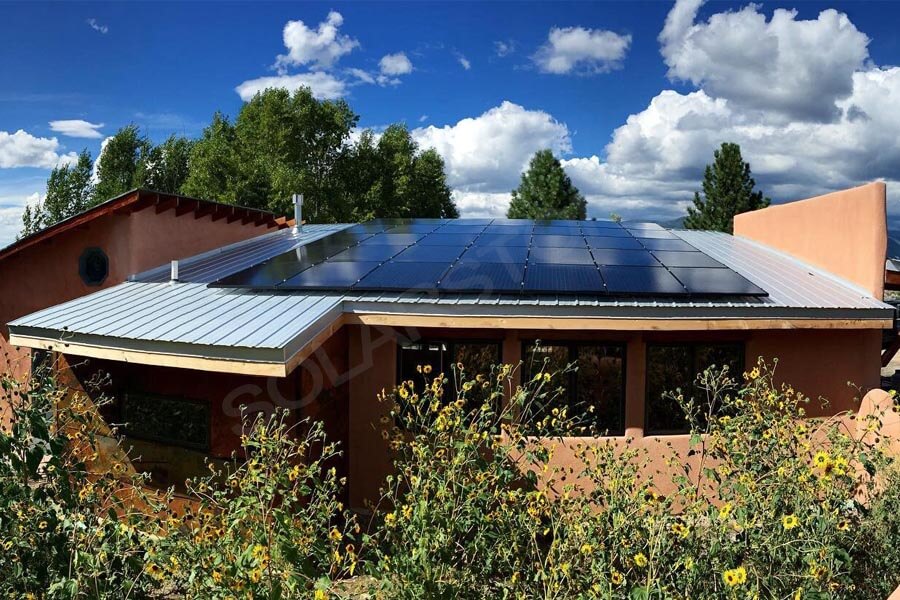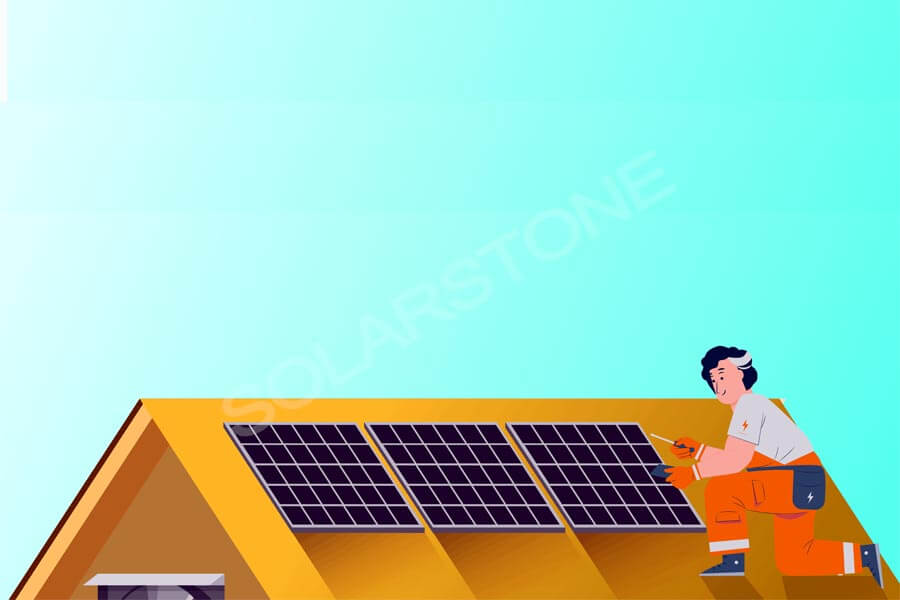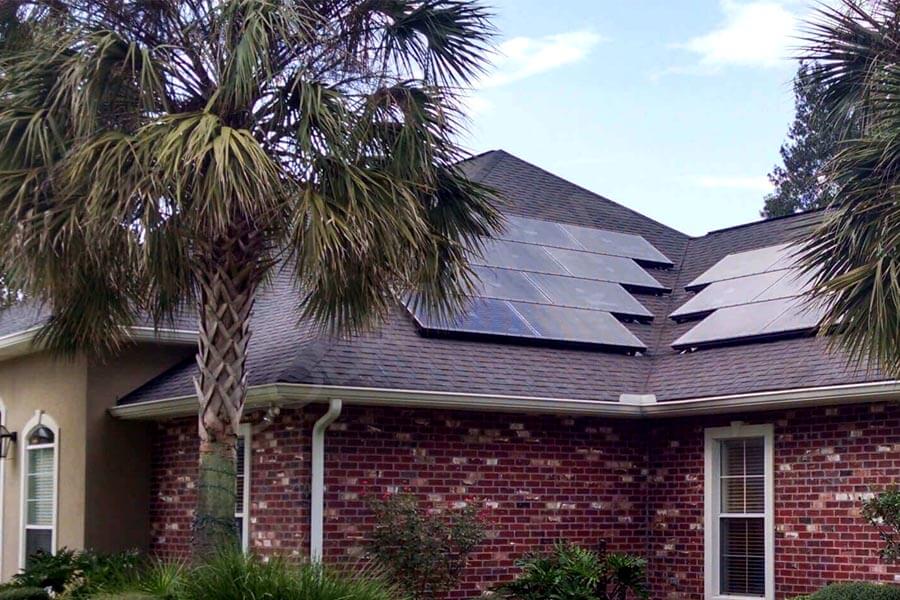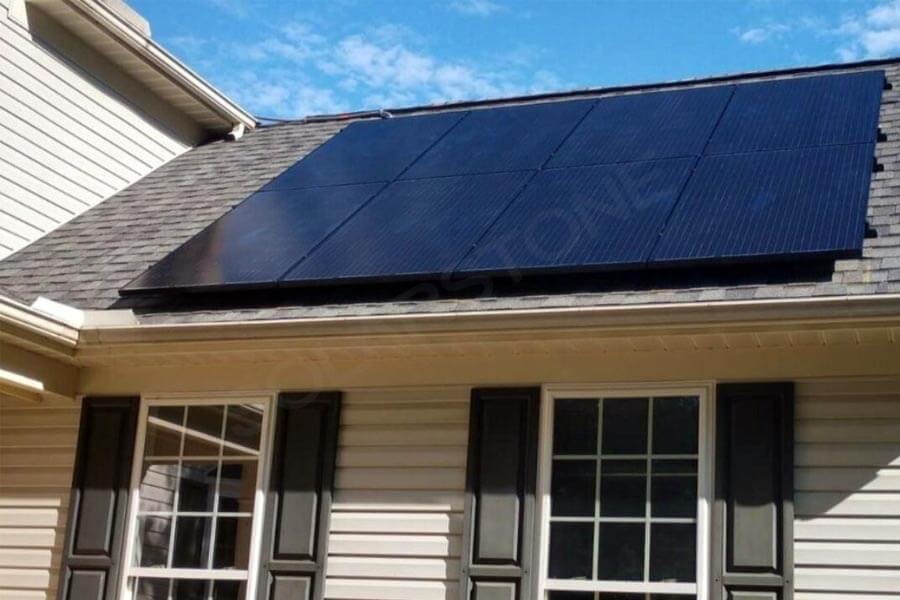System description:
A grid-connected solar power generation system consists of solar panel array, solar inverter, grid-connected distribution box, photovoltaic support and electricity meter.
1. Solar panel array: the total power of solar panels is 10kwp, which is composed of 40pcs 250wp solar panels; It is divided into two square arrays, each of which is 5000wp. Each solar panel square array is equipped with control switch and lightning protection system. The square arrays are connected in parallel and connected to the input end of the inverter. The electricity generated by the inverter is measured by the electricity meter and then transmitted to the load.
2. The power of solar inverter is 10kW and the photovoltaic input capacity is 10kwp.
3. Solar inverter is the core component of solar system. It converts the DC power from solar panel into load, which can make some three-phase AC power supply. When the power grid is powered off or there is no sunshine at night, it will automatically stop working and be in standby mode.
Operating instructions:
1. Before opening the system, ensure that all parts of the system are well connected;
2. If the solar panel and inverter are well connected, the top indicator on the front panel of the inverter is green and flashes; On the contrary, it is not well connected. The staff need to use a universal meter to detect whether there is voltage at the output end of the solar panel, and check whether the connecting line of the solar panel is open circuit, etc;
3. If the inverter and electricity meter are well connected, the indicator light at the bottom of the front panel of the inverter is green; On the contrary, it is not well connected. The staff need to use a multimeter to detect whether there is voltage at the output end of the inverter, and check whether the AC line is open circuit, etc;
4. Whether the connecting wire of the distribution box of the distribution cabinet is loose and whether the cabinet contains air switch, anti surge protector and other devices to ensure its normal function and intact connection;
5. Turn on the mains power control switch to ensure that it is connected to the inverter;
6. After the above inspection is correct, turn on the DC input and bypass input air switches of the inverter. At this time, the inverter starts, the LCD and indicator light of the inverter will turn on, and then turn on the AC output switch, and the system can run;
7. The inverter is an intelligent instrument, many of its functions are automatic control, and manual operation is not allowed;
System maintenance:
1. Solar panel cleaning, photoelectric conversion efficiency test and maintenance;
2. steel support maintenance ;
3. Maintenance of solar inverter;
4. Equipment wiring and grounding inspection;
5. Solar panel cleaning and maintenance procedures;
6. The cleaning of solar panels shall be carried out every half a month. The maintenance of solar panels mainly depends on whether the solar power supply system and battery pack operate normally;
7. This includes checking each solar panel and solar system circuit and circuit connection, and whether each group of solar panels are in normal operation;
8. Check the color, connection, formwork, die glass and frame of the solar cell panel for looseness and damage. Relevant information shall be recorded in the maintenance/repair log. In case of damage, replace it immediately or plan to replace it;
9. The surface of the solar panel can be cleaned each time, which can increase the power generation of the system. According to the actual situation of the site, the cleaning times can be appropriately increased;
Steel support maintenance:
The maintenance of steel support mainly depends on whether the steel support is rusty. If so, remove the rusty part on the surface, and then brush antirust paint; Check whether the screws on the installation part of the solar panel are loose. If so, tighten the screws immediately.
Inverter maintenance:
1. Confirm that the parameter values are set normally;
2. Confirm that the equipment is in good standby state;
3. Keep the equipment clean and dry and maintain indoor ventilation; Keep away from water source and fire source; Do not place small metal objects on the top of the instrument;
4. Do not allow non-professionals to open the equipment for operation or parameter modification;
5. Please do not move the product during operation;
6. When there is an error in the system, the solar inverter gives an alarm. Please check the cause of the error in the system, check it in time and make records;
7. Regularly detect system parameters and make inspection records. If abnormal phenomena are found, find out the causes and deal with them accordingly; If no abnormal causes are found, contact relevant professionals to find out, so as to avoid accidents and affect the use of the system;
8. During system maintenance, be sure to disconnect the solar panel first, and then cut off the load;
Inspection of connecting wires and grounding between equipment
Check whether the connecting wires between the equipment are firm and well-grounded, and whether the screws in the installation part are loose. If so, tighten the screws immediately;
1. Operators must receive relevant training, be familiar with the performance parameters and operation specifications of each equipment, be able to operate the whole system independently, and be familiar with the relevant common sense of strong current;
2. Operators must wear insulating gloves when carrying out maintenance, and the operating tools used are produced by regular manufacturers;
3. The equipment room must be clean, dry and ventilated; Inflammables and explosives are not allowed to be placed in the equipment room;
4. Since the system voltage is 380V and the DC voltage reaches 500V, non-staff shall be prevented from contacting cable joints and power distribution equipment, especially minors;
5. Non-staff are not allowed to operate the instrument, open the instrument, modify instrument parameters, etc;


